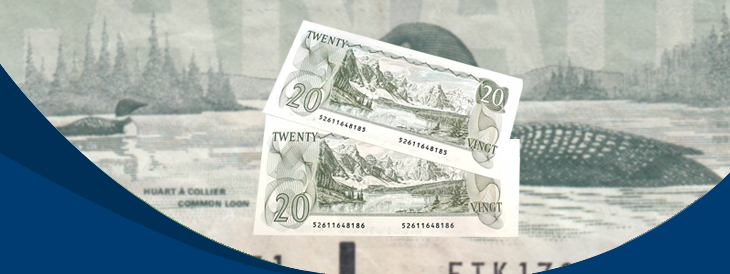Last updated on May 2nd, 2024 at 03:34 pm
Last Updated on May 2, 2024 Posted by Colonial Acres Coins
In the year 1817 Canadian banks first produced and issued paper money, however, in 1935, a few years after the Bank of Canada was created, it changed how Canadian paper money was viewed in Canada. To celebrate this momentous year and the years following, Colonial Acres has a variety of these historical and sentimental notes available. We’re going to look at why 1935 is considered such an important year and who were the men who changed and made history.
The year was 1933, and the Great Depression was in full effect, the citizens of Canada were struggling with poverty, however, a life-changing process was in discussion and things were soon to change. The depression had bought about a severe lack of confidence in the branch banks dotted around the country, and the Prime Minister at the time, R.B. Bennett, worked with his Royal Commission to create a centralized banking system. Within the space of a few short years, Graham F. Towers, the very first Governor of the Bank of Canada was beginning his 20-year tenure. 1935 saw the Bank of Canada given exclusivity of issuing banknotes and by 1937 the second edition of banknotes was created, which caused controversy within the Conservative Parliament Party.
Who are Graham Ford Towers and James Coyne?
Graham Towers was appointed the Governor of the Bank of Canada on the day of its inception, in the year 1934. He set about to build the Bank of Canada from scratch and was hired on the grounds of the many qualities that he had demonstrated during his distinguished rise in the Royal Bank. Mr. Towers remained Governor for a jaw-dropping 20 years and the question of who was going to succeed him was a difficult one. In steps James Coyne, a highly controversial governor and previous Rhode Scholar, he set about warning against the risks of foreign investment and expressed views on economic matters in spite of the differences of his views from government policy. Due to Coyne’s fractious relationships, he was forced to resign on 13 July 1961.
Canada’s First Official Paper Money
Since its commencement, the Bank of Canada has designed seven different series of banknotes. The first edition was released in 1935 in two sets, one French and one English. The groundbreaking release came in 1937 when a bilingual set of notes was released and inspired by the demise of King George V. The design of the 1937 banknotes had a more prominent accord than the 1935 Series, with the face having the digit in the top corners and the printed amount of each denomination framed in the lower corners, with French on the left and English on the right. This series included: $1, $2, $5, $10, $20, $50, $100, $1,000 denominations and the noble colors of the majority of the notes from this series continue to this very day.
Find the Perfect Addition to Your Collection at Colonial Acres
Colonial Acres has a vast number of these groundbreaking and historical notes available on their website. There are over 290 variations of the 1937 note alone and the majority of the denominations are available from the banks’ formation in 1935. If you are interested in the intriguing history of Canadian Banks or collect money from different countries, then Colonial Acres is the right place for you. Canadian paper money is steeped in so much history, politics and controversy, and it plays a monumental part in the rise of such a fascinating and progressive country. Not to be missed out on, these banknotes represent a country that has changed and evolved over the years and signed by historical banking greats such as Graham Towers, James Coyne, Albert Beattie, and John Crow.




